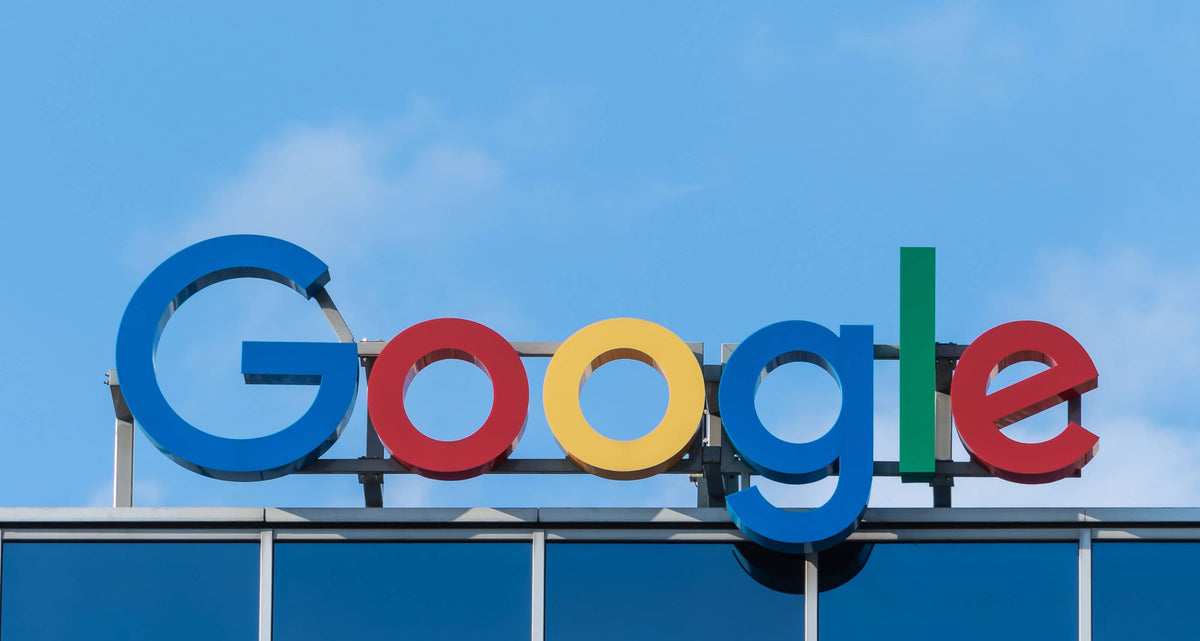
Performance Max (PMax) marks the biggest shift towards complete, unmitigated, and unforgiving automation in search engine marketing to date. Google’s promised to move all advertisers onto the platform by September 2022.
For many, that promise feels more like a threat.
Far from an incremental advance towards more machine learning, PMax changes how we buy ads, structure campaigns, and drive success.
With this change comes a flood of documentation. Worse — as we’ve experienced before — often what Google says to do is tactically different from what we end up doing.
Make no mistake — we are the test subjects.
Despite all that, we’re bullish on it.
PMax is Google’s largest step towards audience and intent-based advertising. Demand creation, not merely demand capture.
To unlock Google Ads in a new way — to acquire new customers — we must understand the fundamentals of Google Performance Max:
- What? Performance Max Definition, Comparison & How It Works
- Why? Five Benefits of Performance Max Campaigns
- How? 10 Best Practices for Ecommerce
Looking to “max”-imize your time?
Cut to the chase and download this entire article — complete with examples and a list of best practices. ⤵️

What? Performance Max Definition, Comparison & How It Works
Google Ads consists of separate components — think: Google Shopping Ads, Google Merchant Center, and Google Search Ads (Adwords) — that make up the platform’s overall ecosystem.
Performance Max is the latest system built on a new set of technologies intended to streamline advertising within the platform.
Google began automatically transferring existing Smart Shopping campaigns to Performance Max campaigns in July 2022. By September 2022, all advertisers are expected to be transitioned in time for holiday shopping.
Getting ahead of the PMax transition now means one less thing to worry about come Black Friday and Cyber Monday.
Simplifying the Definition of PMax
PMax defines a new advertising system within Google in which each campaign accesses all of Google’s ad inventory — think: YouTube, display, search, Maps, and more, all in one campaign.

The new system continues the trend towards automation that Google Ads has been shifting towards over the past five years.
Taylor Holiday, CTC’s CEO, views PMax as Google’s assault on Facebook advertising. And we’re bullish on it.
Our Paid Search team continues to dive into the available research and create best practices for our ecommerce clients — with continually improving results.
How Is PMax Different Than Smart Shopping?
Previously, Google buyers used a funnel approach for ad spend. Allocating a small portion of budget to the low-hanging fruit of brand search, investing heavily in Google Shopping, and then dividing the remaining budget among other areas like non-brand search and YouTube.
We relied on campaign type, mining the available data to optimize as much as possible.
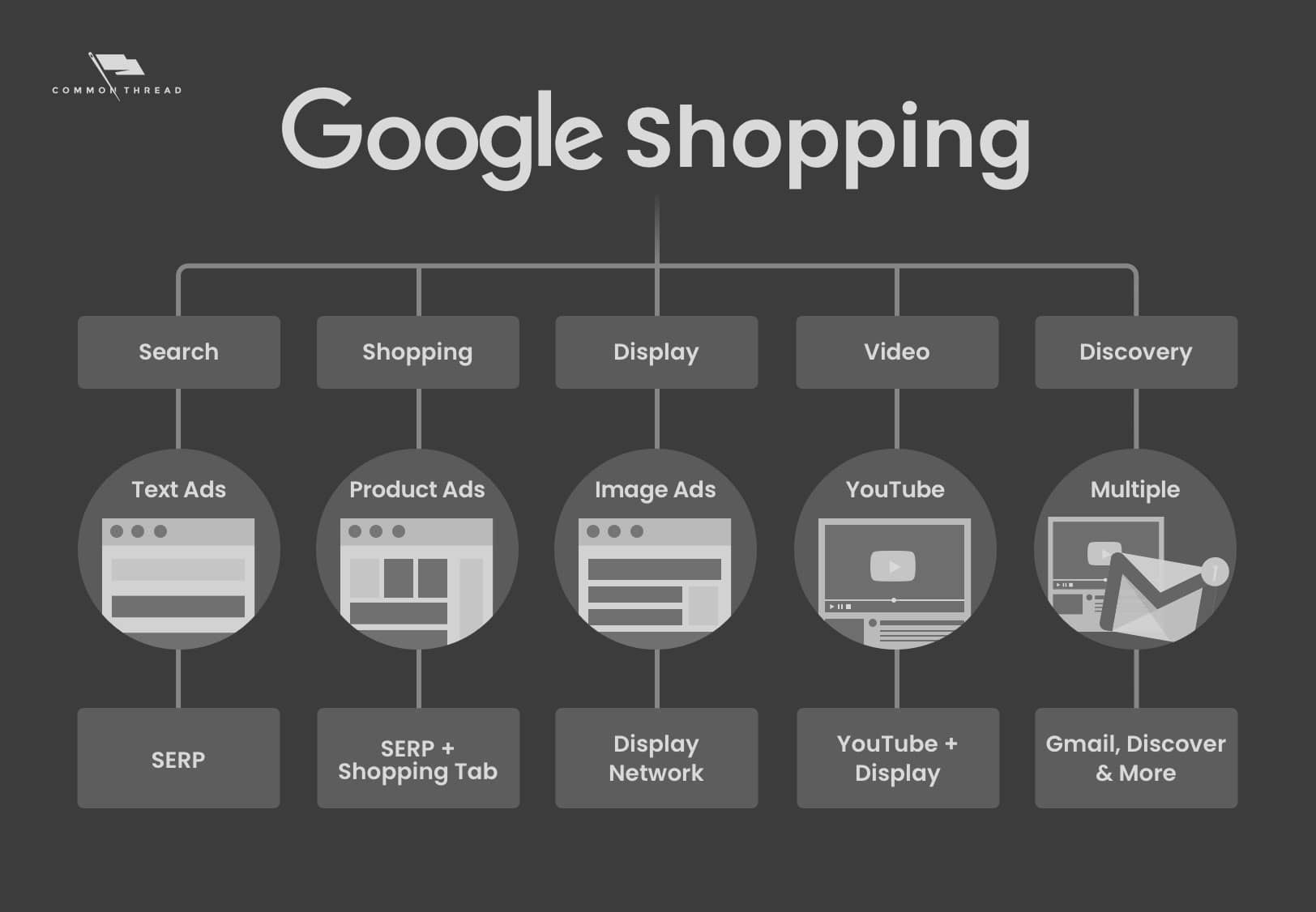
Unlike Shopping, PMax does not allow you to allocate budget by campaign type.
Each campaign now accesses all of Google’s ad inventory at once, then PMax automatically optimizes. This shift means that we have to rethink:
- How we set campaign goals and budgets
- How we build creative assets
- How we evaluate success
The learning curve feels steep, but it will be worthwhile. Ultimately, Google is ushering us into a more streamlined process (more on this later).
Facing Automation Fears
Handing the reins over to Google sparks anxiety in those who seek control. The best way to cope? Learn as much as possible so you can use Google’s Performance Max campaign’s robust automation to your advantage.
In fact, the more you learn, the more control this new automation actually puts in an advertiser’s business-goal achieving hands.
How Does PMax Actually Work?
With PMax, buyers provide the following inputs:
- Creative assets: Text, image, and video
- CPA and ROAS targets (optional)
- Language and geo-targeting
- Signals and audiences
- Campaign goals
- Budget
- Feeds
With these, Google’s machine learning works its magic, providing a mix of campaign types, ad formats, and more to yield the best results for the chosen goals.

Early PMax Results Are Mixed
Even Google is not immune to early rollout hiccups. As with any large technological shift, we expect some “learnings” along the way.
Right now, we’re leveraging our large base of Paid Search clients to test, compare, and optimize PMax campaigns. We’re seeing some phenomenal results, like increased ROAS with increased spend! And also some instances where old-style Smart Shopping ads are outperforming PMax.
Keep in mind that you won’t experience the full benefits of PMax until you’re fully transitioned. As of Aug 2022, some advertisers have only partially opted in, which affects their results.

This will all eventually shake out once the transition completes, at which point everyone will be taking full advantage of PMax’s many benefits.
Why? Five Benefits of Performance Max Campaigns
I’m not here to sell you on the idea of PMax. After all, Google will automatically transfer every advertiser to the platform this year whether they want it or not.
But highlighting some benefits of PMax can ease transition pains and fears. Plus, the knowledge will help you make better use of the platform once campaigns are fully up and running.
Many benefits of PMax are likely yet to be discovered or developed, but let’s take a look at five here.
1. PMax Fully Leverages Audiences
We’ve been beating the drum about audiences for a couple of years, especially when it comes to Facebook ads. Google was all about search terms, while Facebook was the best place to be creative with audiences.
Now we can finally apply those audience learnings to Google with PMax.
Audience signals available for use include demographics and Google Audiences (like affinity and in-market segments) as well as custom segments and an advertiser’s own customer lists.
Being able to include or exclude certain audiences is a game changer. And there are plenty of innovative ways to use first-party customer lists.
The problem of “window shoppers”
Whereas people browsed shops in person pre-pandemic, now we’re seeing an uptick in virtual browsing — adding items to a cart but not checking out.
With PMax, an ecommerce shop can use its own customer lists to build an audience of these virtual window shoppers to apply as a signal in the platform. Targeting and remarketing can even get more sophisticated, for instance, by finding users who initially came to browse from a particular campaign.

Audience signaling is more relevant than ever and PMax helps us capitalize on this tool.
2. Creative Assets Become More Streamlined
A lot of creative professionals initially react to PMax with panic. Since the new platform accesses all of Google’s ad inventory at once, advertisers are no longer providing creative assets based just on the ad types they want to run.
Instead, buyers input raw assets (text, images, videos) and Google assembles the pieces into the most effective ads in the formats most relevant to users.
Creating and inputting so many separate assets sounds like a lot of work.
Rest assured, PMax has tried to streamline this process to make it as painless as possible — after all, Google wants a wide array of assets available in order to get the best results.
Scan for ones that meet size requirements directly from an existing product page or website to make the process even easier.
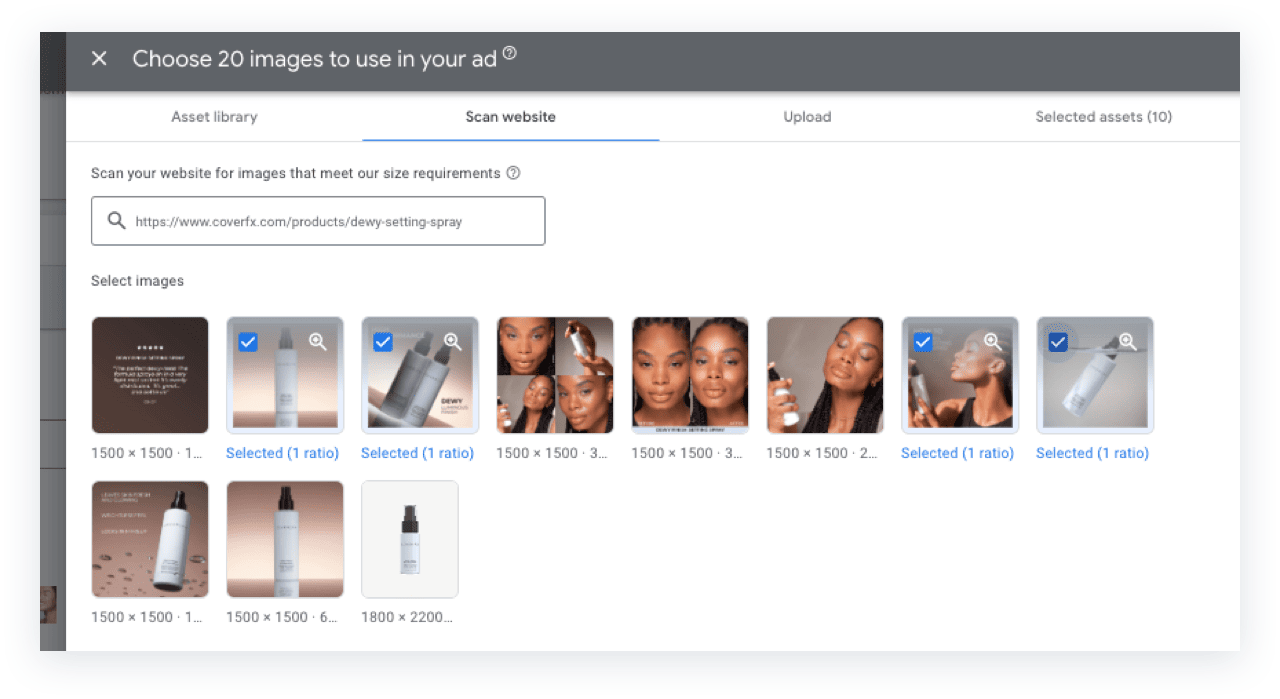
Don’t worry about responsive design in various ad formats because PMax automatically picks the assets that fit.
It also provides an “Ad Strength” rating as real-time feedback to guide the set-up of asset groups. Think of Ad Strength as the new Quality Score.
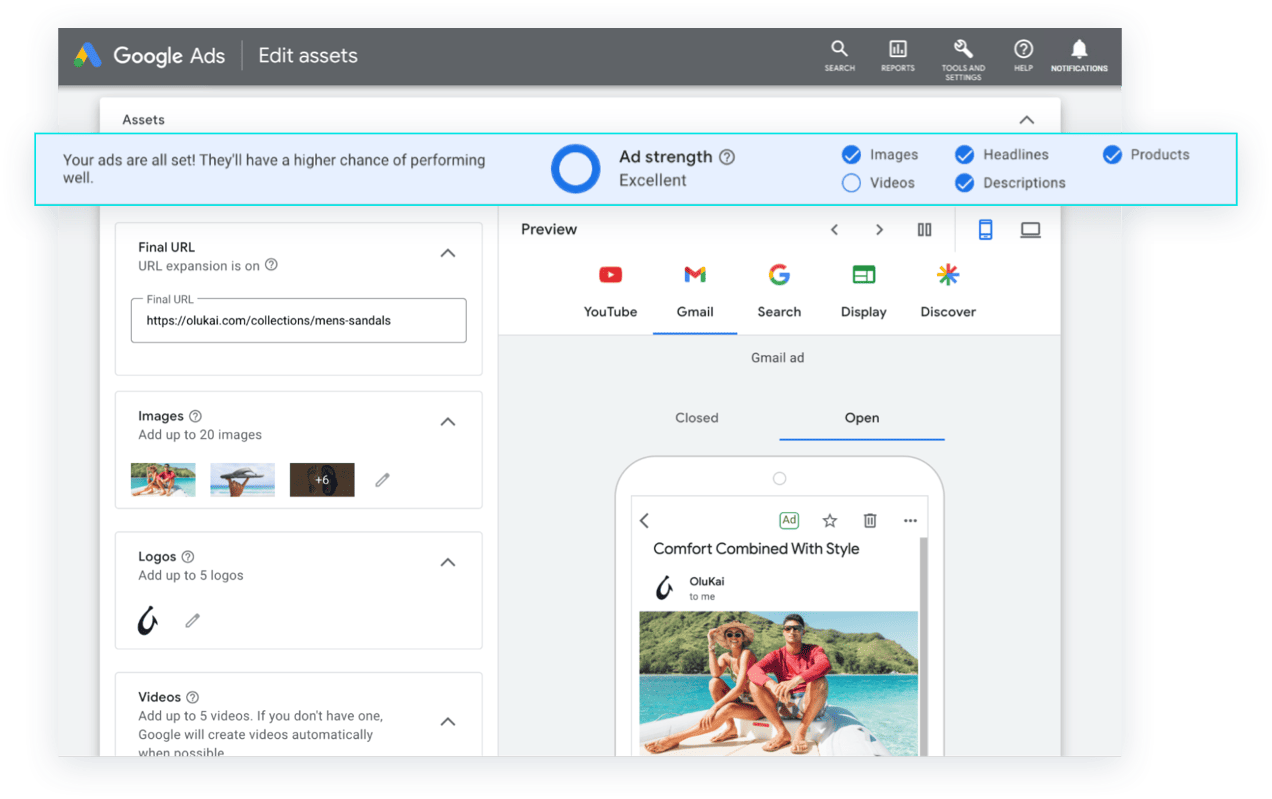
3. PMax’s Automation Reaches Consumers at the “Messy Middle”
A retailer’s ultimate goal with digital marketing rests squarely on customer acquisition.
The problem with trying to sell any one person is that they are in a different place than every other prospect.
One might be watching YouTube; another, using Gmail. One has seen only a single campaign through PPC, while another has had hundreds of exposures through local campaigns.
Our partners at Google call this the “messy middle.”

Each consumer experiences this phenomena before their ultimate conversion. PMax aims to lessen it by allowing us to define specific goals when creating a campaign.
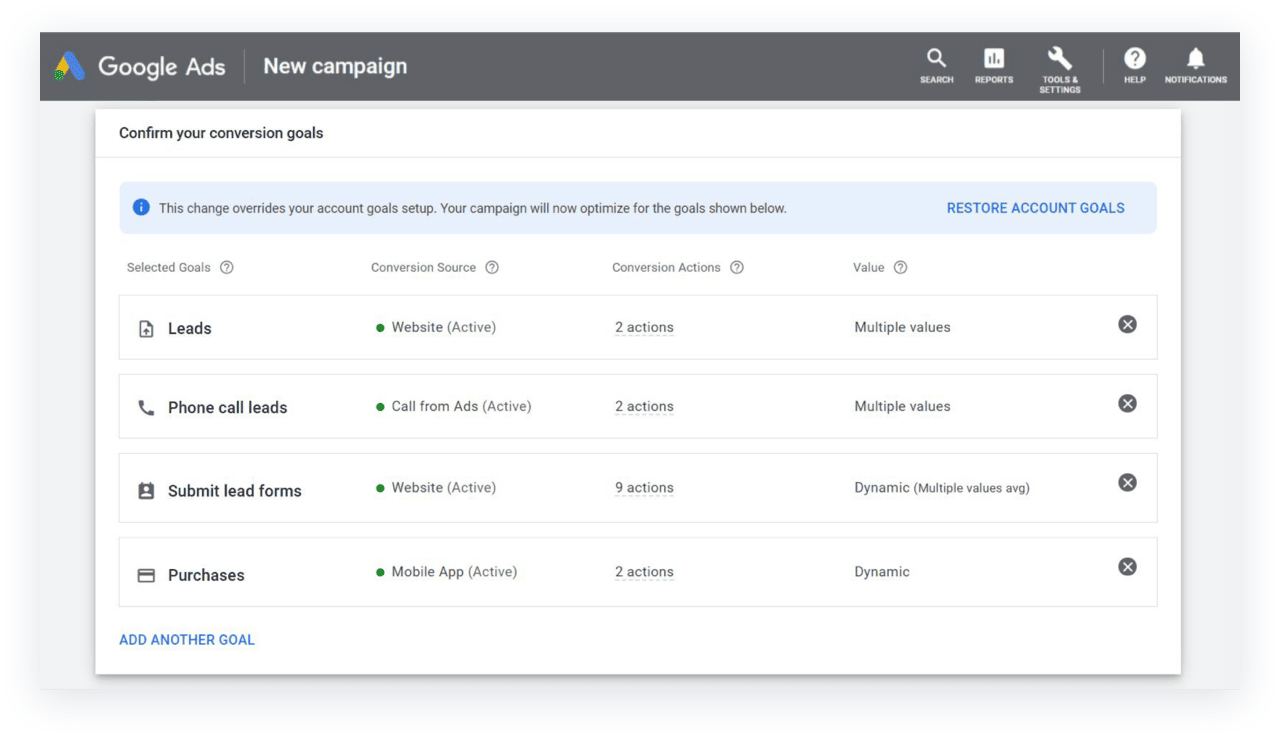
To convert individual consumers, meet them in the middle of their unique “mess.” After setting specific conversion goals, use Performance Max to do the heavy lifting of figuring out the optimal ad for that consumer.
Less mess, more success.
4. Value-Based Bidding Gets More Bang from Your Budget
Not all conversions are equal — some customers bring more value than others. Bidding based on something like target CPA treats all acquisitions as if they’re the same.
Value-based bidding makes all the difference here. PMax allows bidding strategies based on goals like target ROAS that better optimize revenue, not just conversions.
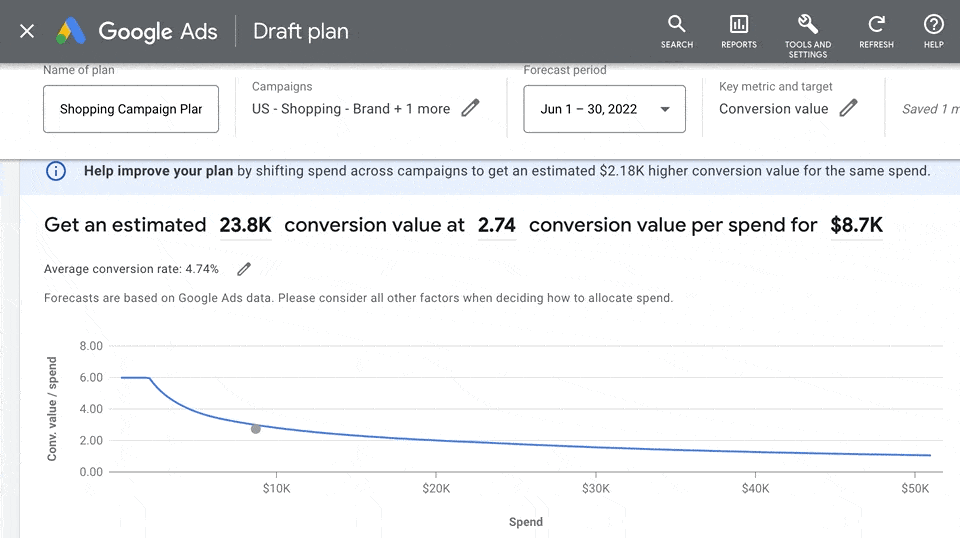
No doubt, value-based bidding will get even better.
Google’s been coy — I wouldn’t be surprised if the ability to bid based on profit goals is in the works. (Of course, you didn’t hear that from me!)
5. Intuitive Data Means Better Forecasting & Optimization
PMax aims to deliver more data. Beyond that, it promises to do it in a more intuitive way without bogging you down in long reports.
While the Ad Strength metric provides instant feedback on creative assets, PMax also integrates with Insights to quickly and easily discover what’s working, resolve performance issues, and ultimately drive better results.
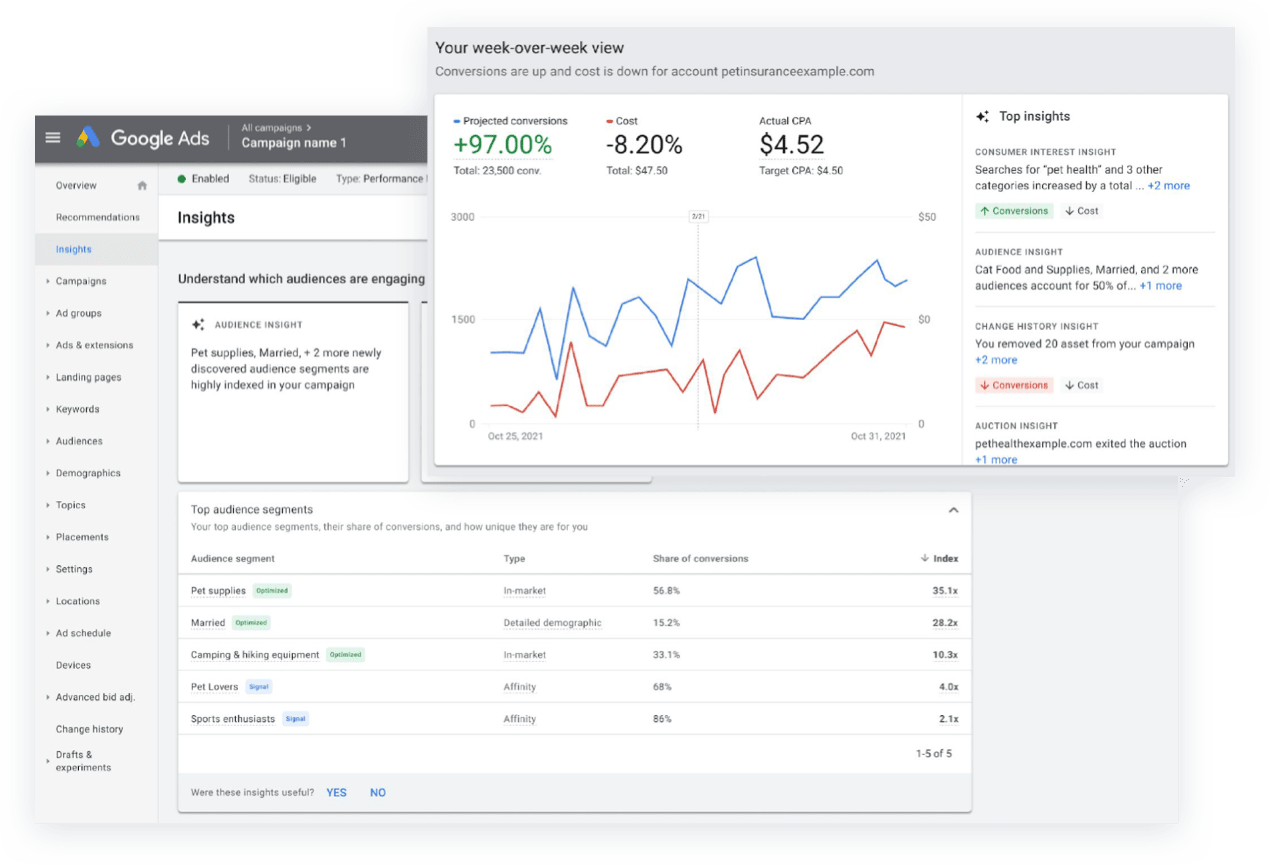
Again, automation proves to be a good thing in terms of taking control of business goals. After setting your objectives, PMax delivers actionable insights faster than manual split-testing ever could.
PMax’s Insights guide us towards adjusting the inputs we control to get the results we want.
More data also means better forecasting … which means improved decision making. For instance, finding that budget sweet spot means modeling the decay in ROAS as spending increases.
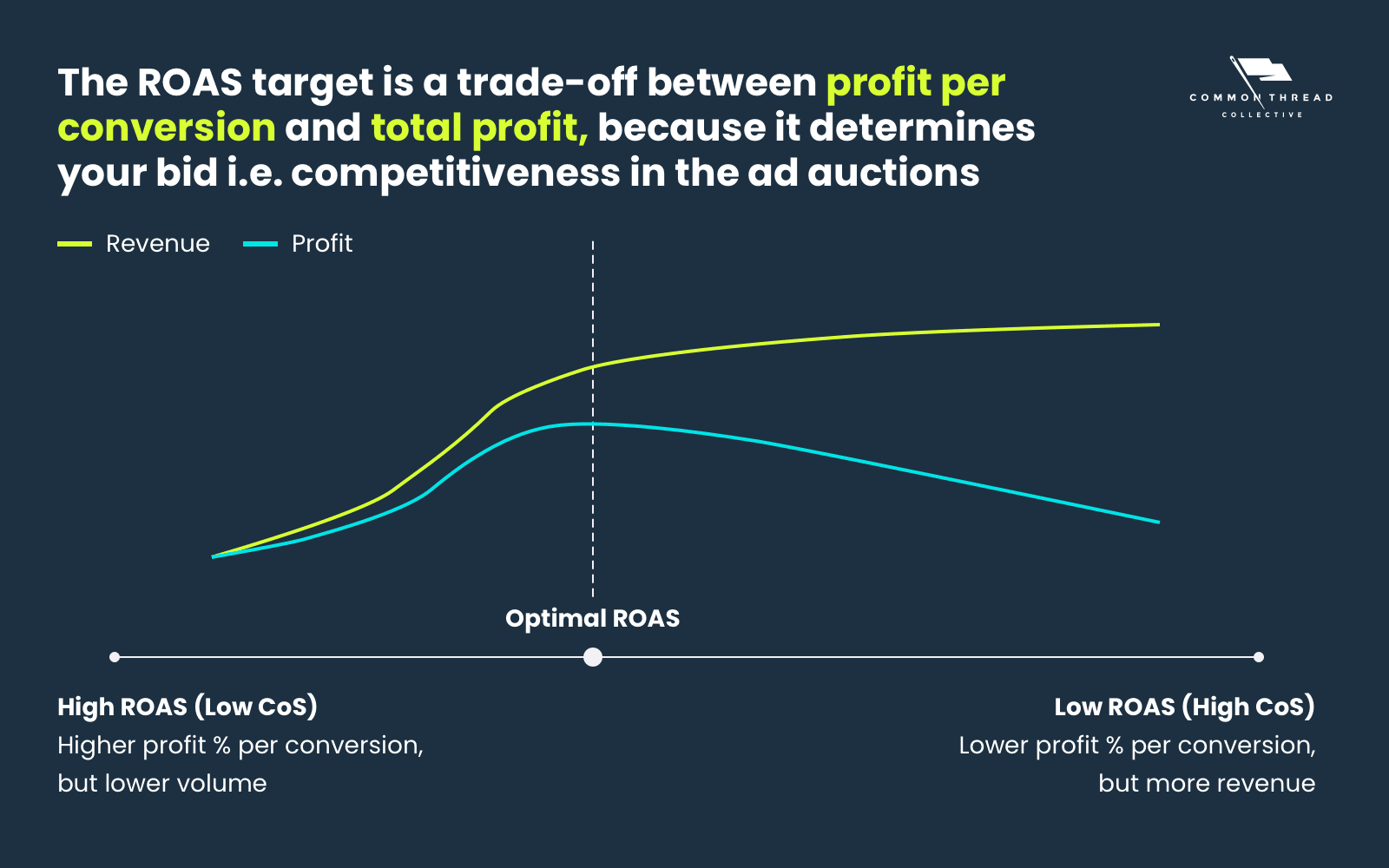
Robust data plus automation leads to profitable spending. Let’s break down exactly how to get there …
How? 10 Best Practices for Ecommerce
Hopefully by now you’re amped for PMax (or, at the very least, less panicked about it). Whether you’re currently transitioning or already full-throttle, here are 10 best practices to ensure you get max benefits from PMax.
1. Send First-Party Audience Data to Google
Incorporating a brand’s own audience data supercharges PMax results.
Existing data (like a simple customer list) or custom segments (like "Pet Lovers”) can be used as audience signals in PMax campaigns.
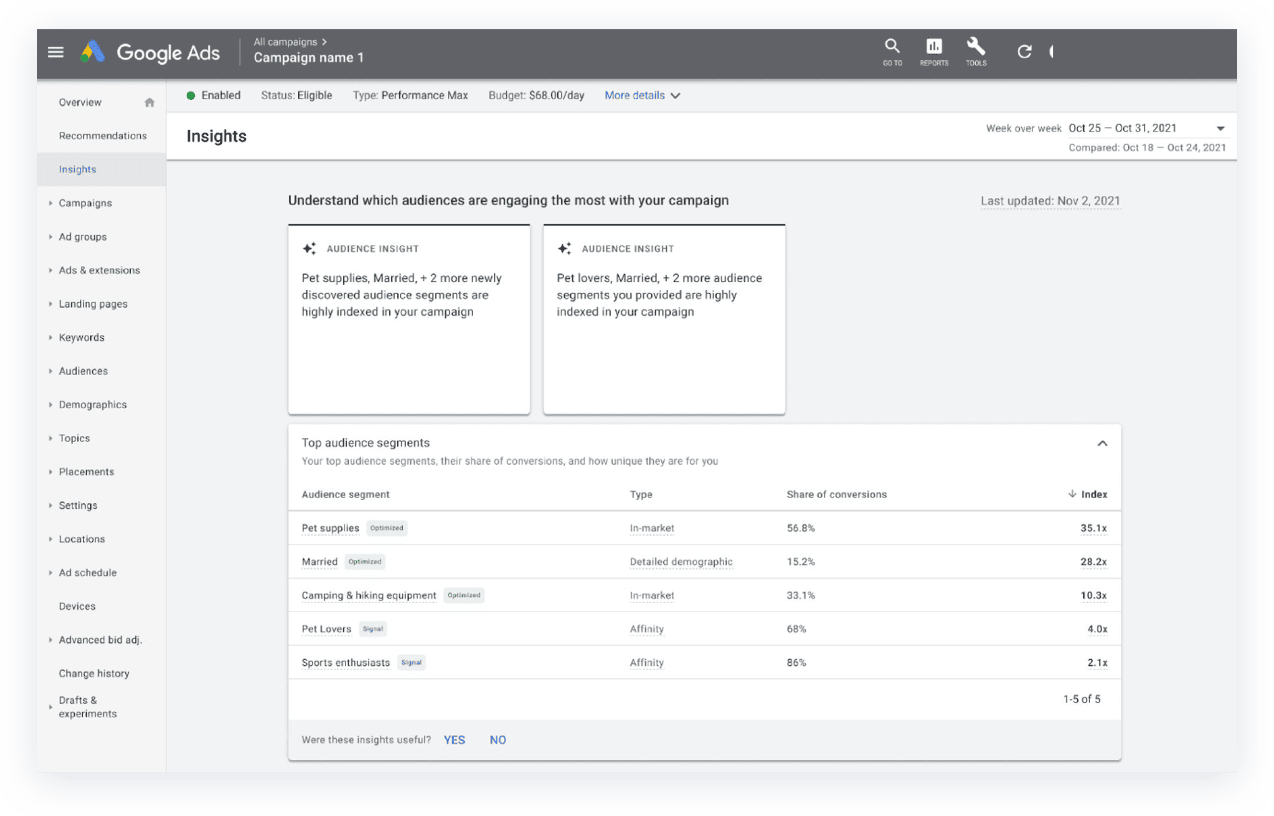
Using first-party audience data also allows for the creation of more specific goals (such as ones around new customer acquisitions).
2. Build up Product Data Feeds
Feeds were crucial in the old Smart Shopping world, and they continue to be valuable in PMax campaign settings. Despite all the new creative and audience options, Google fundamentally remains a beast that eats words.
PMax produces better results when you feed it as much structured product data as possible (keywords in names and descriptions, product ratings, etc.).
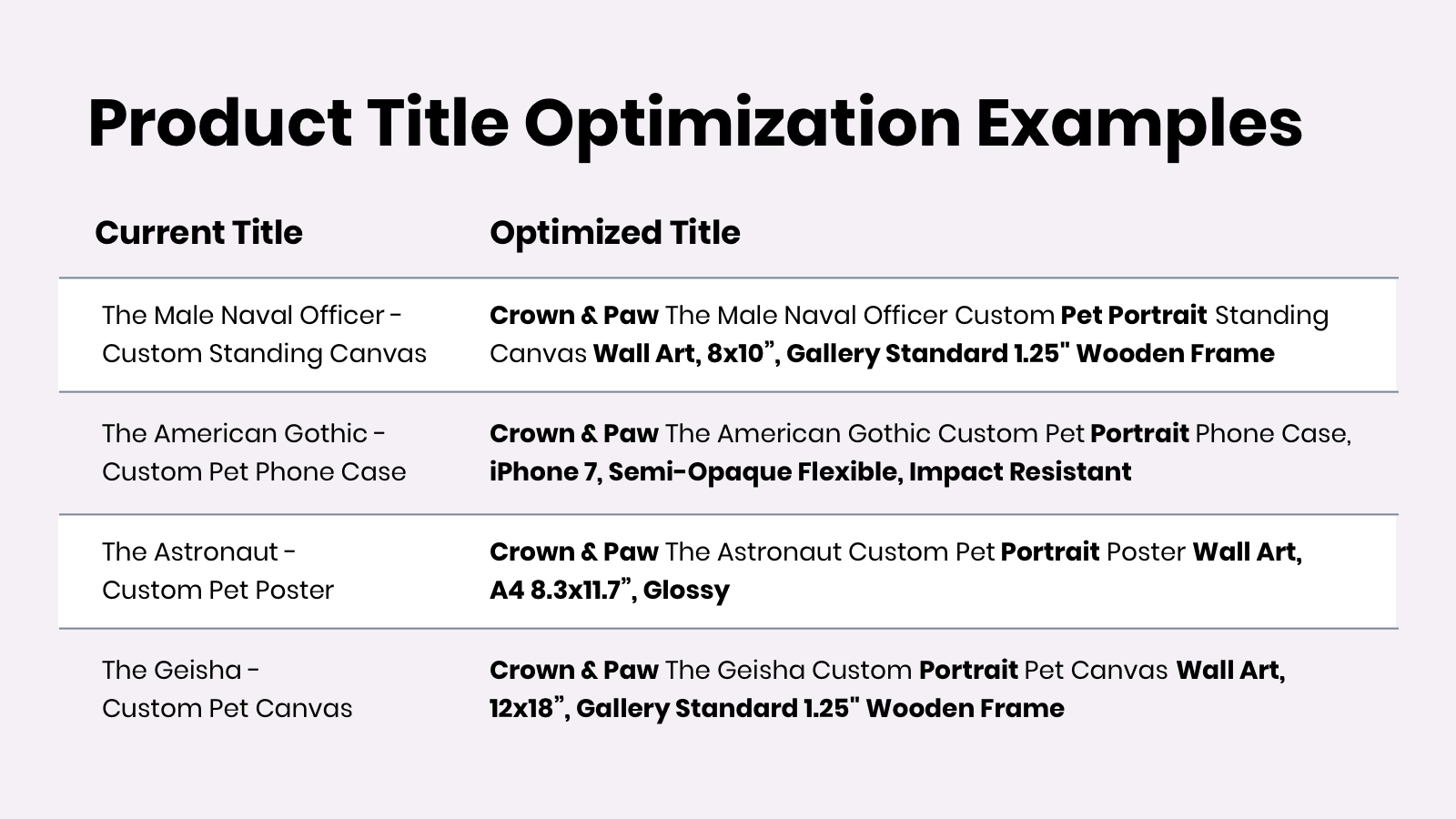
Adding cost of goods sold (COGS) takes feeds to the next level. In addition to manually creating feeds in Google Sheets there are also various third-party tools that can help with more sophisticated feed work.
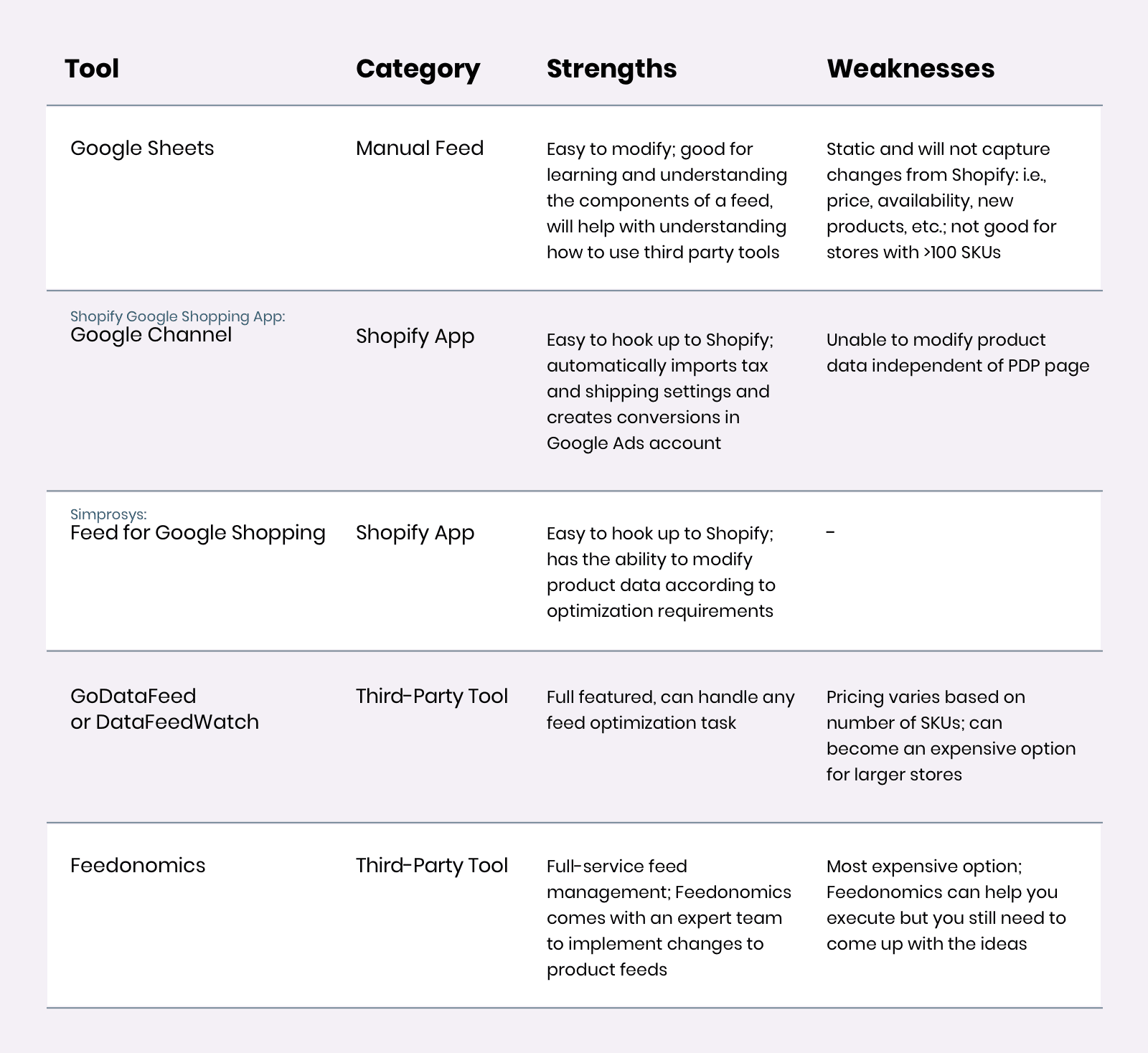
3. Put Careful Thought into Campaign Goals
PMax follows the lead of Smart Shopping where you can set value-driven goals instead of typical benchmarks like CPA. For instance, you may need to estimate average order value if a campaign has multiple conversion types.
In order to fully benefit from the automation of PMax, set your primary goal to purchases. But you can also set secondary goals if desired, like to “Begin checkout.”
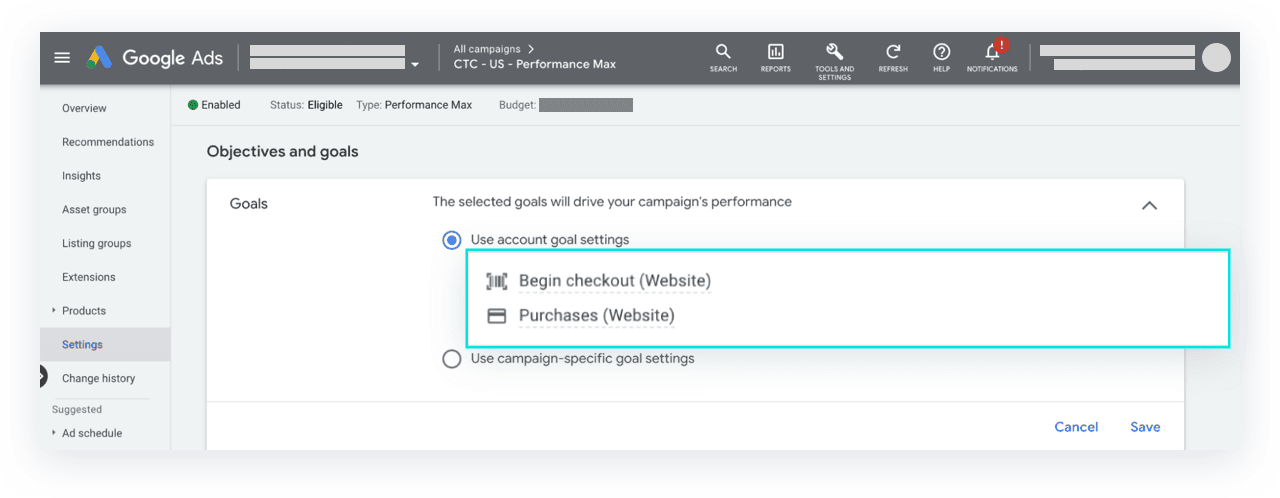
Google also recommends aligning all campaigns to the same set of account-level goals.
We no longer have to think of just base-level acquisitions. Ladder all goals up to high-level marketing objectives. Probably conversion value.
I’m hoping that we will eventually be able to ladder up to profit here, as well.
4. Set Appropriate Budgets
Your budget needs to be large enough for PMax to properly work its automation magic. However, “large enough” is a relative term.
If you’re searching for the sweet spot to determine your ad budget, check out our Profit Analysis Calculator. We’ll show you exactly how to run a profitability analysis for your ecommerce marketing campaigns.
Then, insert your magic number into Google’s budget and bidding section.

Don’t forget to consider how ROAS targets affect budget as well. If we aim too high, the budget and reach will be limited. If we aim too low, we might break the bank.
5. Take Advantage of PMax’s “Final URL Expansion” Feature
Turned on by default, “final URL expansion” allows PMax to experiment with different landing pages on the advertiser’s website to optimize search campaigns.
Remember that “messy middle”? Now we can help potential customers cut through the mess and get to the right place faster.
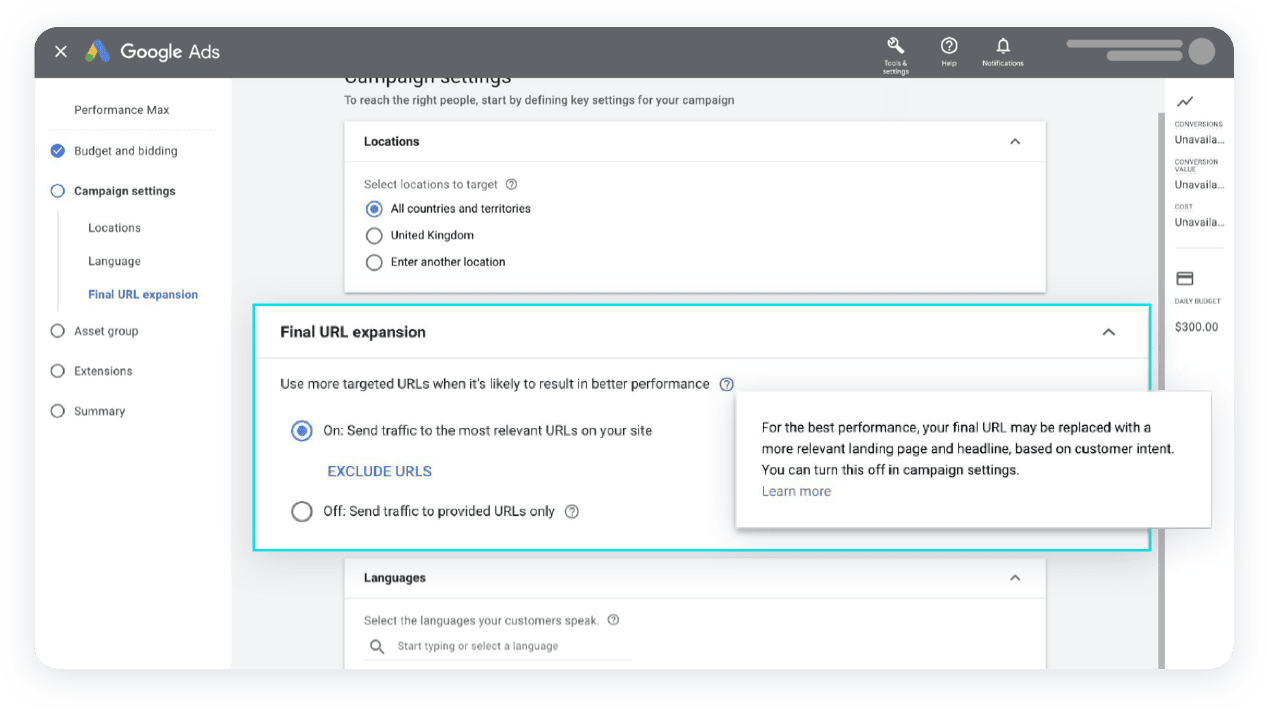
The feature can be adjusted to exclude certain non-converting pages or pages that are not relevant to a campaign.
The only reason to ever turn the final URL expansion feature off is if only one solitary page leads to conversion … which should never be the case.
6. Use the Ad Strength Indicator to Guide Asset Group Building
An asset group will include a number of text, image, and video inputs. You can create separate asset groups for various product lines or audience segments.
This chart shows the required assets, plus recommended amount for each type.
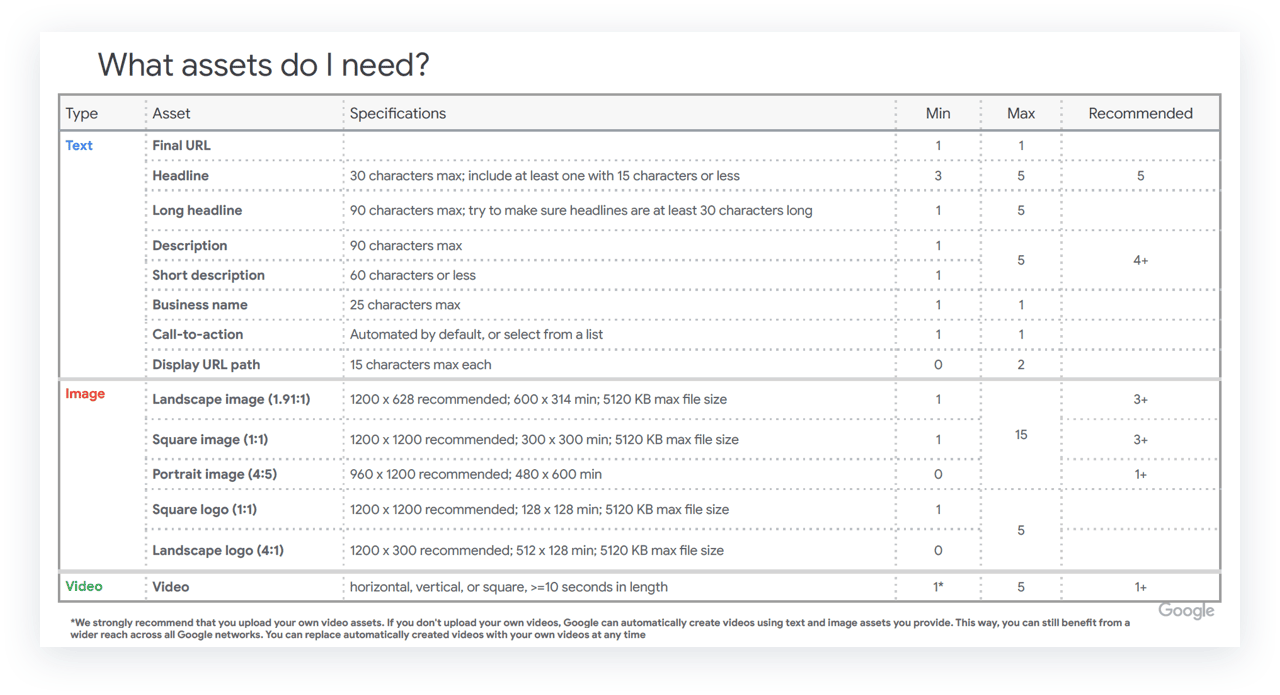
More assets in a group means the campaign can access more potential ad inventory and PMax has a better chance to find success. Keep going until the asset group gets an Ad Strength score of Excellent.

7. Plan for Regular Evaluation of Assets
Although it relies on automation, PMax is not a “set it and forget it” system. Even if an asset group starts with an Excellent rating, make sure to evaluate the individual assets regularly.
Having more assets always works better for PMax.
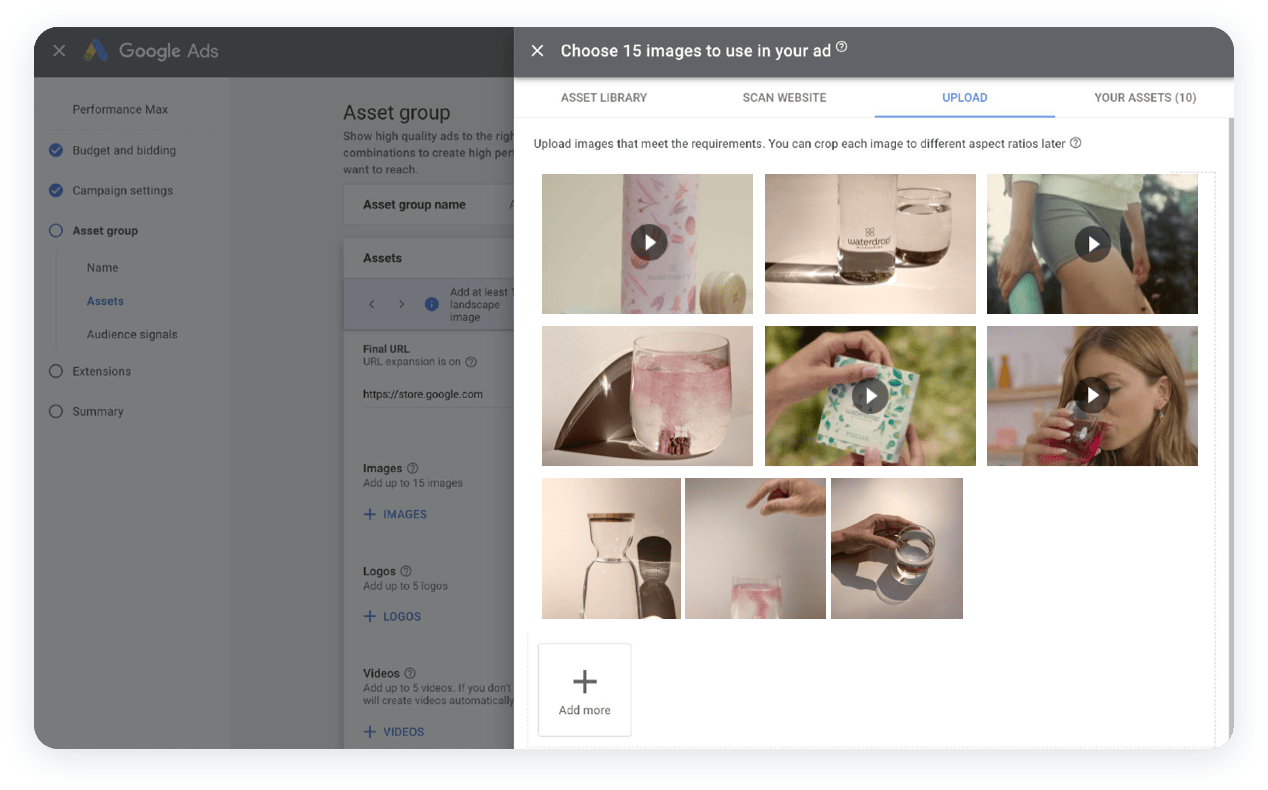
If you’re running out of options, don’t forget to scour all product pages and social feeds in case there are some forgotten creative assets worth trying.
Just make sure everything fits the PMax specs and take special care that image assets are high quality.

8. Consider Changing Up Video Presentation
The best performing video ads follow the AIDA framework: attention, interest, desire, and action.
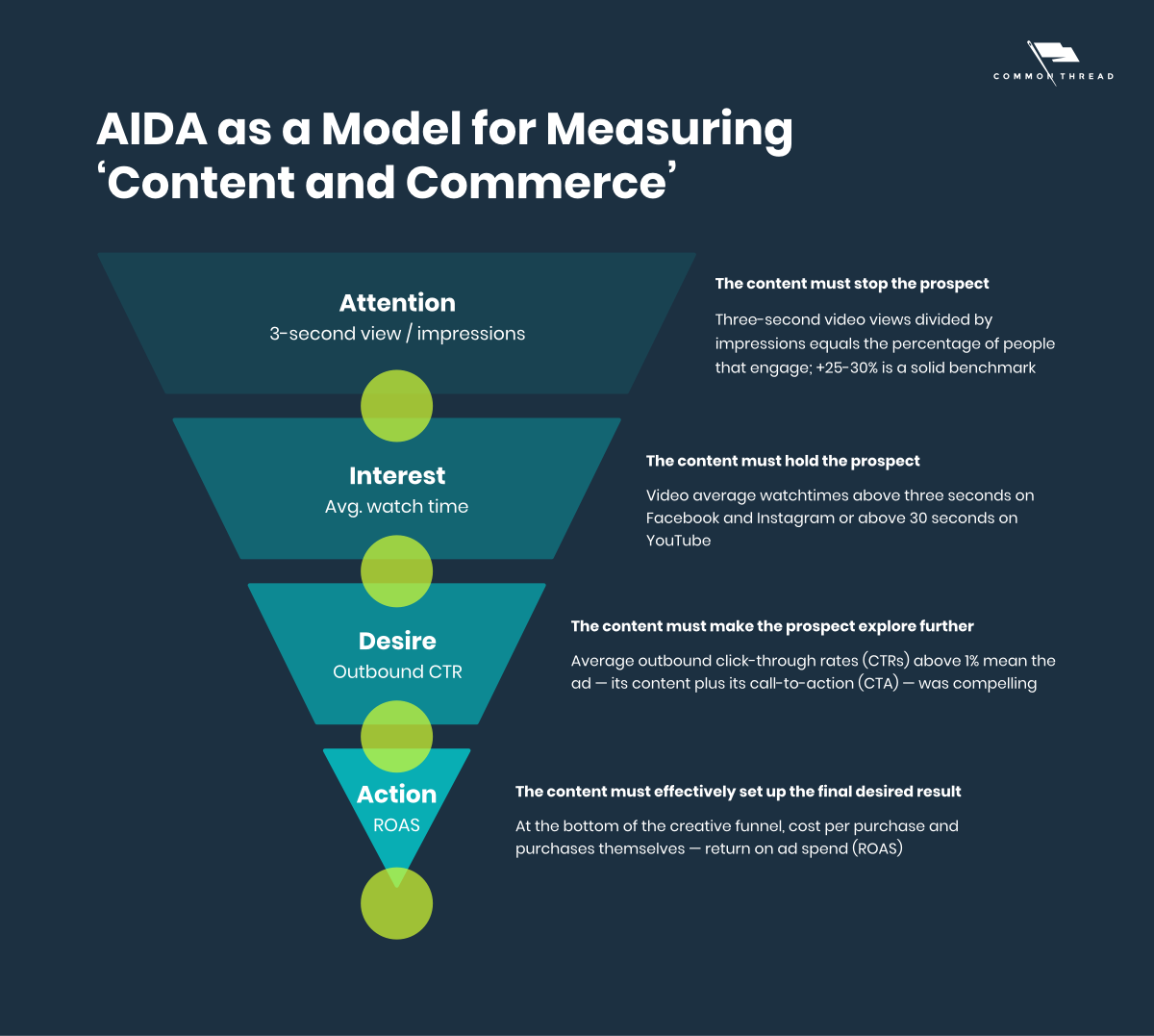
When thinking about YouTube specifically, take advantage of the smaller screen and the viewers’ intimate relationship with the medium. Consider making the traditional story arc more dynamic to hold their attention.
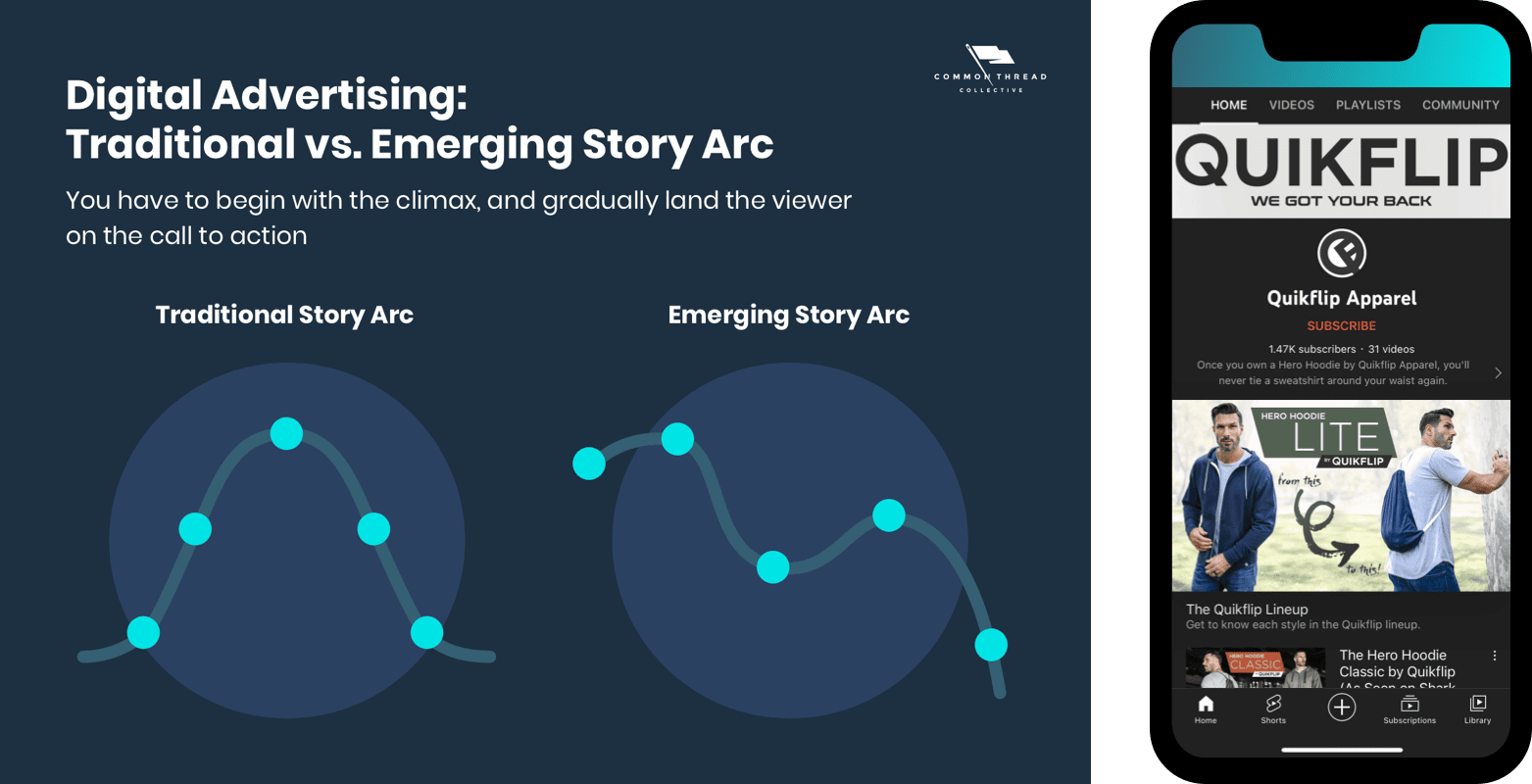
Video ads produce very specific data about how long the audience watches, which helps for iteration and testing new creative.
9. Lean on Existing Resources
The Google Ads YouTube channel showcases tons of tutorials and explainer videos right from the source. Anyone who missed Google Marketing Live 2022 can also view archived videos of the presentations.

Here at CTC, we’ll continue sharing more about our entry into the new PMax world. Grab our Guide to Google Performance Max to keep all these tactics on hand as you navigate the new system.
PMax will continue to evolve, so learnings will continue to come. We’re all figuring this out together. Keep an open mind and get used to iterating.
10. Ask for Help
When it comes to your PMax campaigns, if you’re feeling overwhelmed — or if you just want to build even more kickass new campaigns — CTC is here to make your graphs go up and to the right.
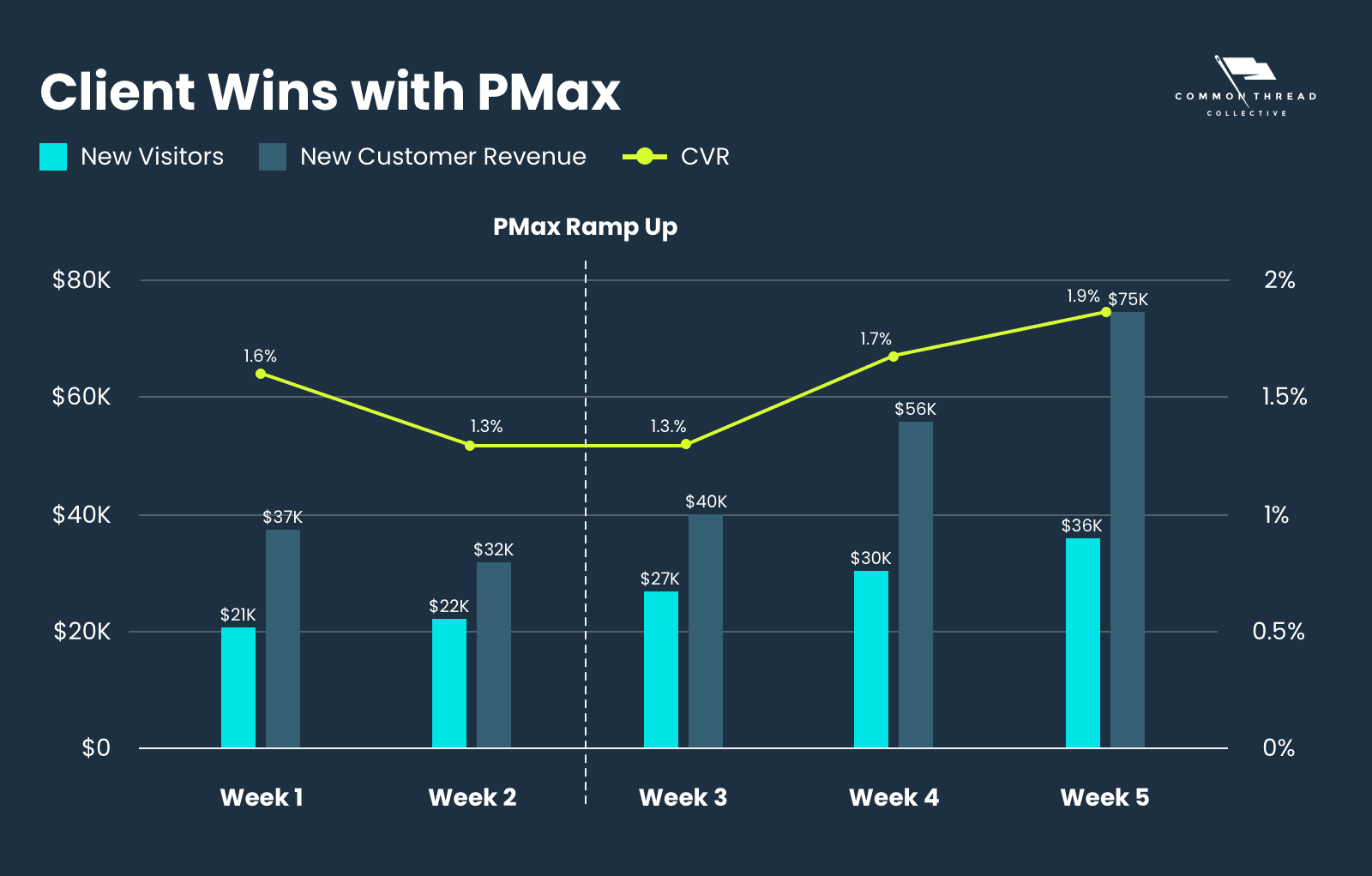
We have some of the best Google experts in the world on our team, and we also have a strong direct relationship with Google.
Possibly most valuable, we have dozens of clients undergoing the PMax shift at once. This offers us unique insights into what’s working and what’s not. We’re learning more, and more quickly, than any individual buyer could.
Reach out for an audit to see how we can help you take your PMax campaigns to the max.
Maximizing Performance Max: The Future (Present) of Advertising on Google
The switch to PMax represents a huge shift for all Google advertisers. With campaigns now accessing all of Google’s ad inventory, the processes for creating ads, setting goals, and evaluating success have all evolved.
Change is difficult, but PMax offers exciting benefits.
The ability to signal custom audiences unlocks new targeting possibilities. PMax’s interface streamlines creative asset building. New forms of data and value-based bidding lead to more profitable spending. And all of this gets supercharged by the power of an automated campaign type.
By learning the ins and outs of PMax, and following best practices, you’ll soon be a PMax Maxtermind.
(Thanks for enduring all the puns.)
We won't send spam. Unsubscribe at any time.

Tony is the Director of Paid Search at CTC. With 10+ years of experience and over 10k hours working in the Google Ads platform, his knowledge of paid search marketing strategies and tactics is extensive. Connect with Tony on Twitter or LinkedIn if you feel like ranting or raving about all things Google Ads.